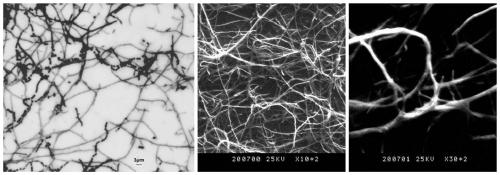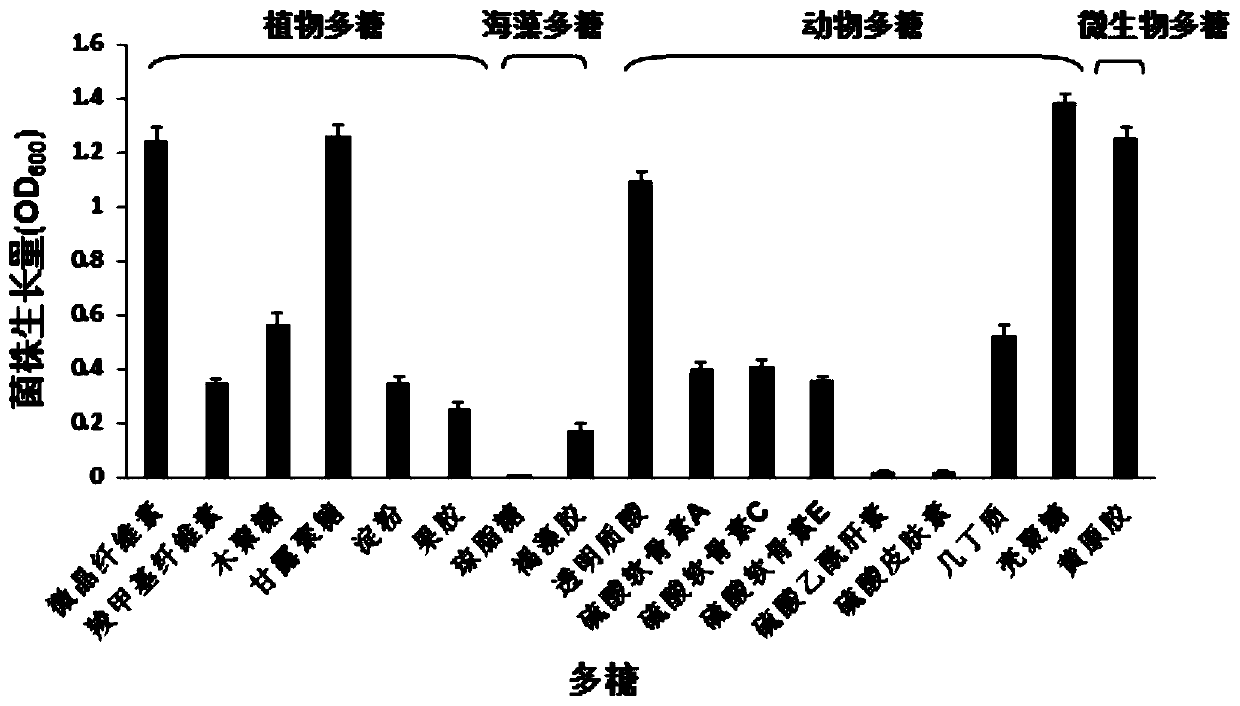A Streptomyces polysaccharide-degrading bacterium and its cultivation method and application
A culturing method and Streptomyces technology are applied in the field of Streptomyces polysaccharide degrading bacteria and their cultivation fields, and can solve the problems of rare single Streptomyces polysaccharide degrading enzymes and other types of polysaccharide degrading enzymes
- Summary
- Abstract
- Description
- Claims
- Application Information
AI Technical Summary
Problems solved by technology
Method used
Image
Examples
Embodiment 1
[0044] Embodiment 1, the separation and purification of soil microorganisms in the root system of Fritillaria sichuan
[0045] Take the root soil leaching solution of Fritillaria sichuanensis, add 1 mL of the supernatant to 9 mL of sterile water, and dilute to a concentration of 10 -1 、10 -2 、10 -3 、10 -4 、10 -5 5 concentration gradients. Thoroughly mix the diluted bacterial suspension with Gaoshi No. 1 medium at about 50°C, make two parallels for each concentration, and culture at 28°C for 7 days. Pick out the actinomycetes colony with a more typical form, and then separate and purify it by streaking on the plate for 3 times, then pick a single colony in TSB liquid medium, cultivate it for 3 days at 28°C and 200 rpm, take 1.6ml of the culture and add it to 400μl glycerol, mix well and store in -80℃ refrigerator for a long time.
[0046] The above-mentioned TSB liquid medium has the following components per liter:
Embodiment 2
[0050] Embodiment 2, the screening of polysaccharide degrading bacteria
[0051] The strains obtained in Example 1 were inoculated on the sole carbon source liquid medium, cultured at 200 rpm and 30°C for 72 hours, and the turbidity of the bacterial liquid was observed. At the same time, the culture supernatant was taken for carbazole reaction to detect the carbon source. Consumption. The enzyme-producing strains were selected according to the above two indicators. The strains that were turbid in each unique carbon source medium and had a small carbazole reaction value were picked and cultivated on TSB solid medium, and the strains were recorded as CB16.
[0052] The preparation method of the above-mentioned sole carbon source medium is:
[0053] Add polysaccharide substrates to the ionic medium to a final concentration of 0.10% (w / v);
[0054] The above polysaccharide substrate is selected from: cellulose, carboxymethyl cellulose, xylan, mannan, chitin, chitosan, starch, p...
Embodiment 3
[0060] Example 3, Molecular Identification of Streptomyces sp. CB16 Strain Based on 16S rRNA Gene
[0061] Genomic DNA of the bacterial strain was prepared using the Bacterial Genome Extraction Kit (Tiangen), and the genomic DNA of the bacterial strain was used as a template to amplify using the universal primers of the bacterial 16S rRNA gene. After verification, it was connected to pEASY-Blunt Simple Cloning Vector and transformed into E.coli DH5α. After ampicillin resistance screening, positive clones were obtained. The 16S rRNA gene sequencing was completed by Sangon Bioengineering (Shanghai) Co., Ltd. The sequence was compared with the 16S rRNA gene sequence of standard strains collected by the National Center for Biological Information (NCBI), and a phylogenetic tree was constructed using MEGA6.0.
[0062] The above-mentioned general primers for the amplification of the strain 16S rRNA gene are:
[0063] The forward primer is 27f: 5'-AGAGTTTGATCCTG GCT CAG-3';
[0064...
PUM
 Login to View More
Login to View More Abstract
Description
Claims
Application Information
 Login to View More
Login to View More - R&D
- Intellectual Property
- Life Sciences
- Materials
- Tech Scout
- Unparalleled Data Quality
- Higher Quality Content
- 60% Fewer Hallucinations
Browse by: Latest US Patents, China's latest patents, Technical Efficacy Thesaurus, Application Domain, Technology Topic, Popular Technical Reports.
© 2025 PatSnap. All rights reserved.Legal|Privacy policy|Modern Slavery Act Transparency Statement|Sitemap|About US| Contact US: help@patsnap.com



